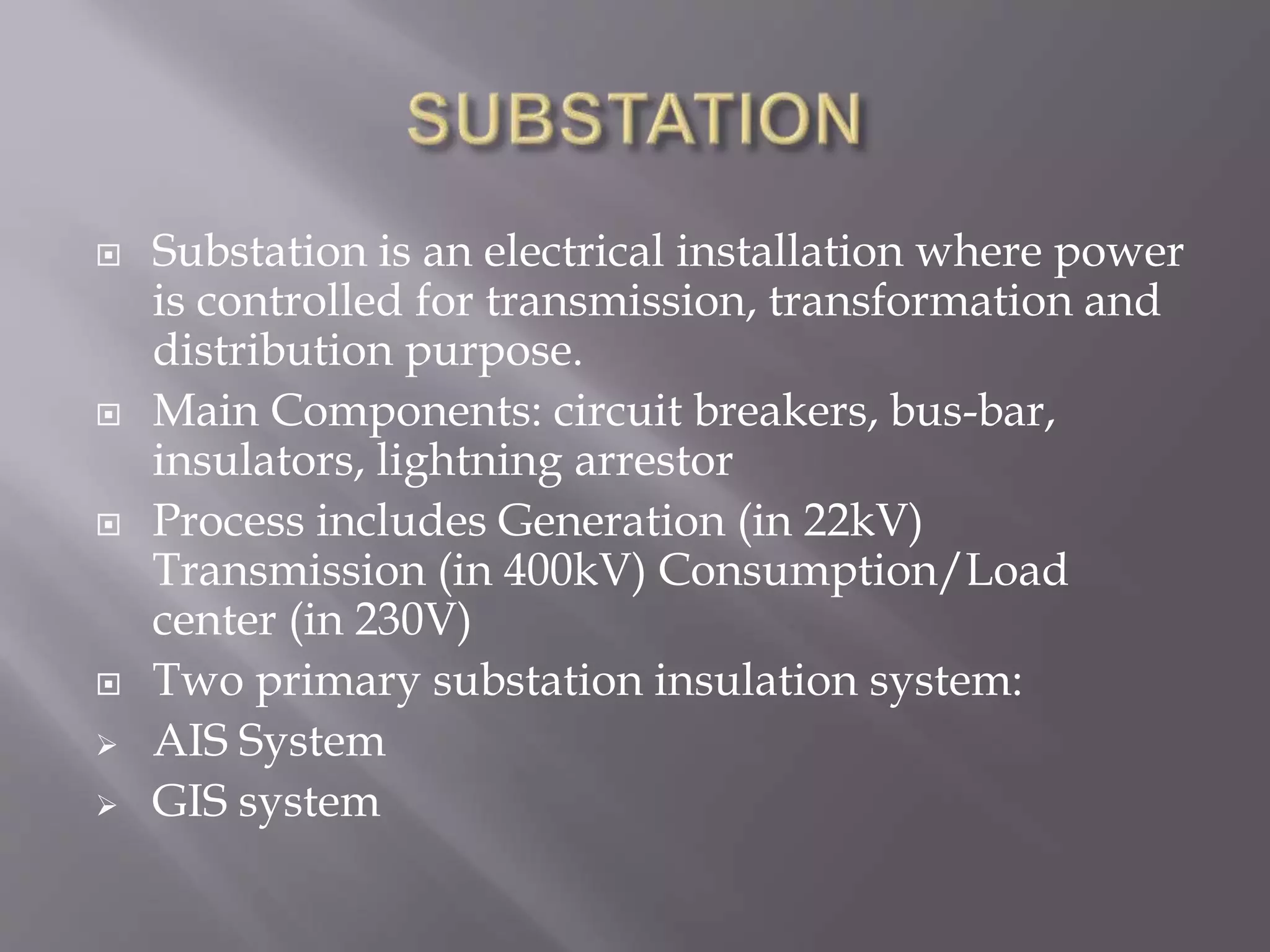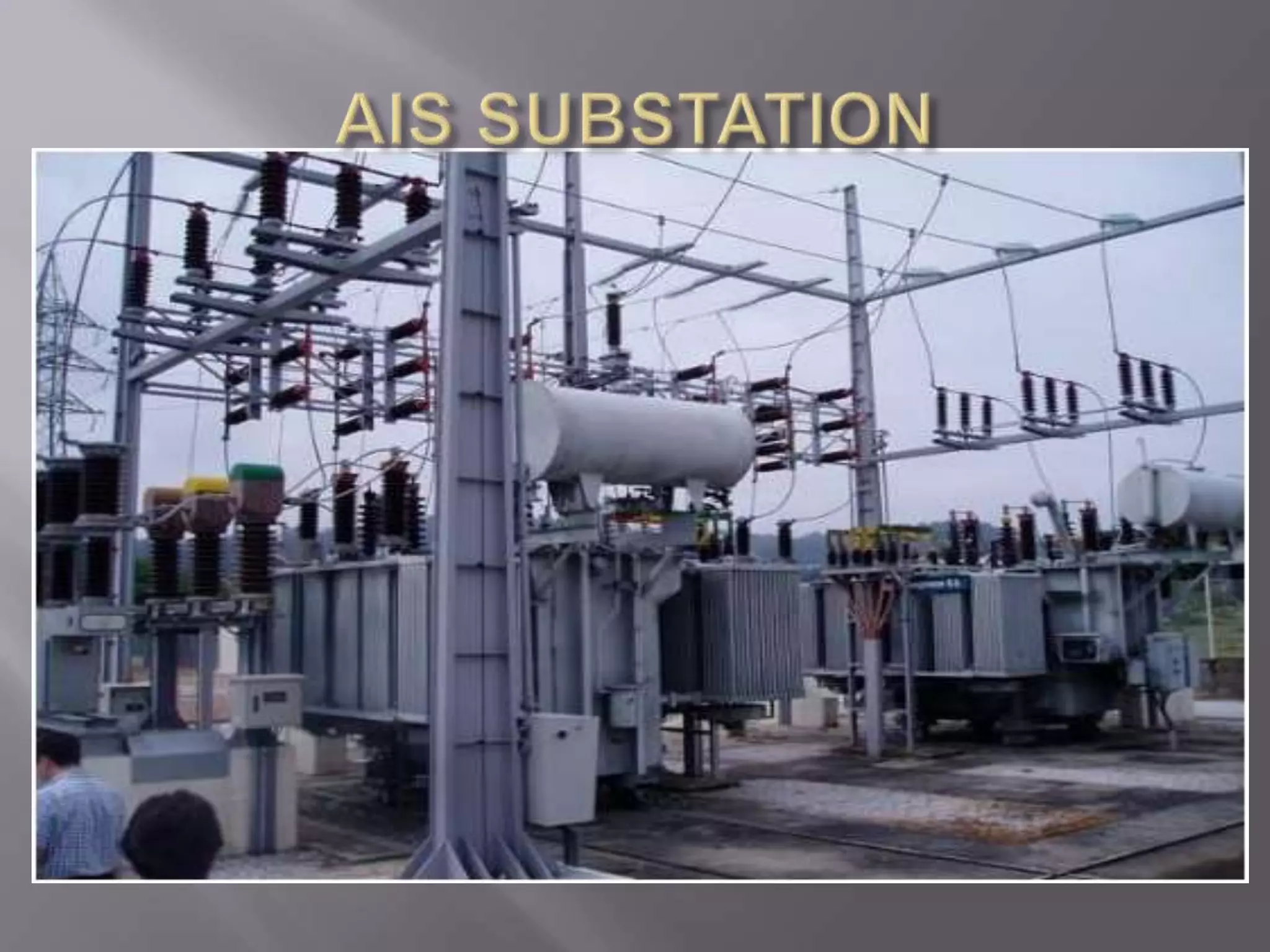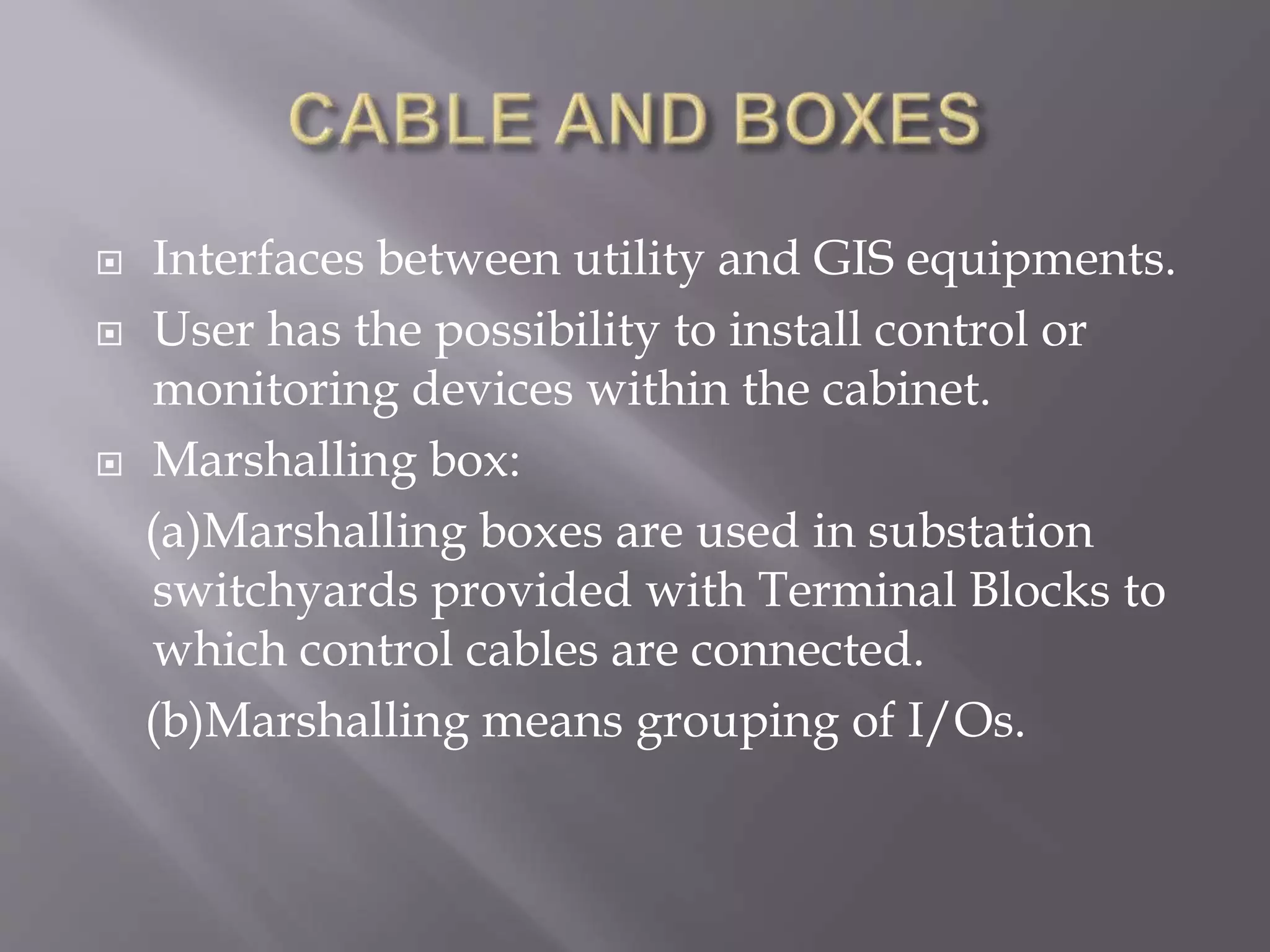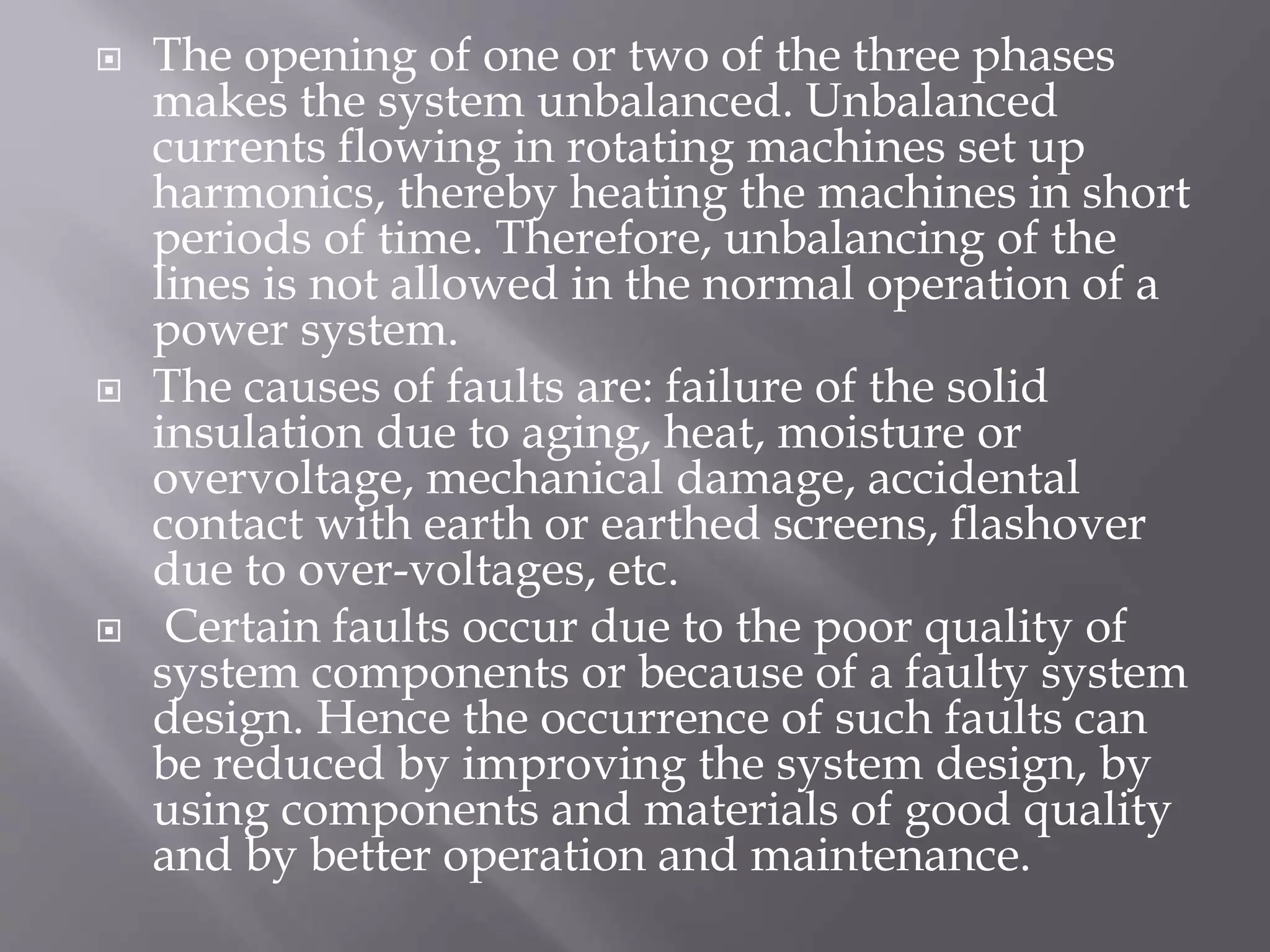An electrical substation uses components like circuit breakers, busbars, and insulators to control the transmission, transformation, and distribution of power. There are two main types of substation insulation systems: air insulated (AIS) and gas insulated (GIS). AIS uses air as insulation between live components, while GIS uses sulfur hexafluoride gas to insulate live components within a sealed metal enclosure. GIS systems require less space than AIS but have higher installation costs. Protective devices in substations include circuit breakers, disconnectors, earthing switches, and surge arresters, which work to isolate faulty sections of the electrical network to prevent damage.





















































